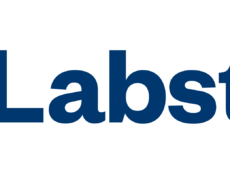
Articles
Higher Education
Industry News
Why Everyone’s Talking About “The Creeping Capitalist Takeover of Higher Education”
By Cait Etherington
April 16, 2019
If you haven’t already heard, there is a “creeping capitalist takeover” happening in higher education–at least this is what Kevin Carey, the vice president for education policy and knowledge management at New America, passionately argued in an article for the Huffington Post that went viral earlier this month. Since Carey’s post appeared on April 1, it has not only received thousands of views but generated a robust debate among educators, administrators, and policy analysts about the role online program managers (OPMs) are increasingly playing in non-profit higher education.
Carey’s Key Arguments
Carey’s article opens with something everyone is already talking about–the cost of higher education and the corruption that increasingly is shaping the higher education landscape. As he rightly observes, “The price of college is breaking America.” To make matters worse, Carey writes:
“At a moment when Hollywood celebrities and private equity titans have allegedly been spending hundreds of thousands in bribes to get their children into elite schools, it seems quaint to recall that higher learning is supposed to be an engine of social mobility. Today, the country’s best colleges are an overpriced gated community whose benefits accrue mostly to the wealthy. At 38 colleges, including Yale, Princeton, Brown and Penn, there are more students from the top 1 percent than the bottom 60 percent.”
But the high cost of tuition and widespread corruption aren’t really what Carey takes aim at in his article. His real culprit is the failure of colleges and universities to take advantage of online learning’s potential to make higher education accessible to all. As Carey writes in his post, if you want to make higher education accessible, you don’t need to adopt a Bernie Sanders’ style free tuition for all model. As Carey observes, “The answer is online learning.”
To be fair, Carey acknowledges that online learning hasn’t always offered a viable way to make higher education affordable to all. After al, two decades ago, online courses and programs didn’t have the reputation they have now.
Carey also passionately makes a case for the affordable nature of online programs: “There are no buildings to maintain, no lawns to mow.” For all these reasons, Carey maintains that universities could use online degrees to address the soaring cost of tuition, but this isn’t what is happening. As he observes, by contrast, most universities are charging the same to students whether they complete courses online or off.
Carey’s Critics
Inside Higher Education recently solicited a series of reactions to Carey’s provocative article. While most of their commentaries were in full agreement with Carey’s observations, Inside Higher Education did find at least a few critics.
Justin C. Ortagus, an assistant professor of higher education administration and policy and director of the Institute of Higher Education at the University of Florida, writes, “Carey raises valid concerns about some exploitative practices of OPMs and the inherent problems associated with entering into partnerships with for-profit entities with completely different missions than nonprofit colleges and universities.” But Ortagus argues, Carey ultimately gets a lot wrong:
“Contrary to the information presented in Carey’s article, online education is not necessarily ‘a lot cheaper for universities to run,’ when compared to face-to-face education. The cost structure of online education is associated with economies of scale, which suggests that the cost advantages of online courses are present at larger enrollment levels. Online degree programs require significantly higher up-front costs to develop their online courses.”
Trace Urdan of Tyton Partners agrees that Carey grossly underestimates the cost of running a robust online degree program. But Urban also takes issue with Carey’s assumption that higher education should be affordable. “Mostly Carey doesn’t like profit making in higher education . . . and because he can find no examples of actual harm resulting from these programs, he has blamed them for higher ed price inflation.”
What’s Really At Stake?
What’s really at stake in Carey’s article are several questions that anyone connected to higher education–educators, administrators, policymakers, and students–can no longer afford to ignore. First, if online degree programs are now not only widespread but also increasingly being offered by prestigious universities, what is their value? If online degrees are equivalent to on-site degrees, should they cost less simply because they are less costly to do deliver–at least after the initial development and launch costs have been recovered? Second, should education be affordable for all or should it, as Urdan suggests, be priced like any other product available on the free market?
In many respects neither of these questions are new. What is clear is that as OPM company profits continue to surge, these questions are going to receive a growing amount of attention. Carey’s article may, in fact, just be the tip of the iceberg.
Image source: aron-van-de-pol-115112-unsplash.









No Comments